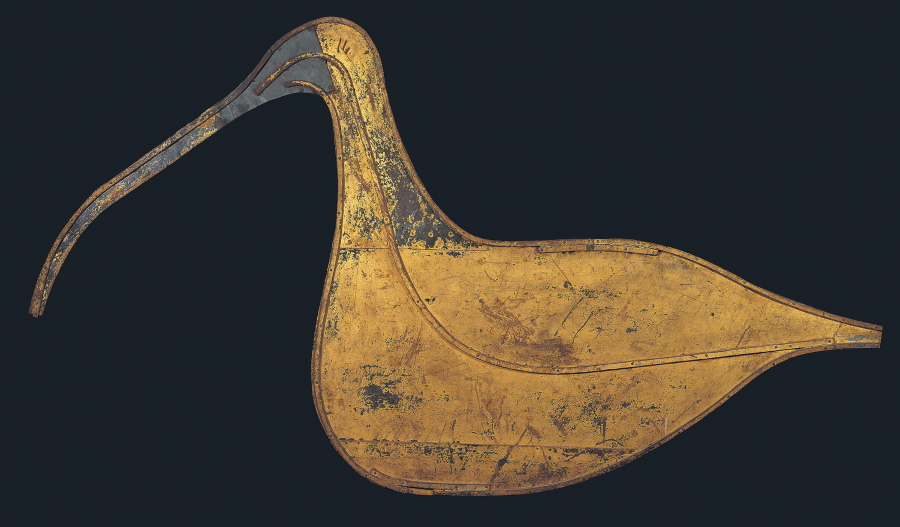Perched atop churches, barns, businesses, homes and seats of government, weather vanes have over hundreds of years taken the form of everything from farm animals to pets, storybook figures to race cars.
They were invented for one important job: telling which way the wind was blowing. Gradually, they became appreciated as an art form.
A new exhibition at the American Folk Art Museum in New York, “American Weathervanes: The Art of the Winds,” showcases the history, technical virtuosity and artistic beauty of vanes made between the late 18th and early 20th centuries. The free exhibit runs through Jan. 2.
“Weathervanes have always been at once tools and sculptural architectural elements, combining function with visual interest and symbolism,” the show’s curator, art historian Robert Shaw, writes in a companion book (RizzoliElecta).
The galleries feature around 50 weather vanes and patterns, along with ephemera like bills of sale, advertisements and vintage photographs.
The weather vanes range from simple carved birds, fish, livestock and dogs to figures that seem to literally be riding the winds – loping ponies, racing horses, fire trucks, and wildly imaginative witches, sea serpents and vehicles with many moving elements.
One work, “Dove of Peace,” was commissioned by George Washington. An amateur meteorologist, he asked Mount Vernon’s architect, Joseph Rakestraw, to design the dove-shaped weather vane with olive branches in its mouth.
The museum’s curator, Emelie Gevalt, cited the museum’s own “Hudsonian Curlew” as one of her favorites.
The 1874 piece is large — nearly 7 feet tall and 4 feet wide. A relatively simple design, it depicts the body and distinctive curved beak of the shorebird in gold-leafed sheet metal, and once sat atop the Curlew Bay sportsmen’s club in Seaville, New Jersey.
“The magnificent silhouette of this large vane communicates exactly why early 20th century Americans found weathervanes so appealing,” Gevalt said. “The graphic impact is strikingly modern, speaking to the strong intersections between the modern aesthetic and what we call ‘folk.’”
The exhibit also includes a 62-inch-tall, gilded statue of a Native American with bow and arrow pointed skyward. The work set a record for a weather vane sale, $5.8 million, at Sotheby’s in 2006.
Native Americans were a common subject of early American weather-vane art. In the exhibit, Joseph Zordan, consulting scholar and a member of the Bad River Ojibwe, contributed interpretive text about these vanes and the legacy of colonialism. “Inevitably, such images tell us more about the people who made them than those they are said to represent,” he said.
Simple tool
What makes a weather vane work? The arrow on the structure is a balancing weight, so when the wind blows, it – and whatever object is attached above it – turns in that direction.
A change in wind direction can mean a storm is coming, so the weather vane was a key tool for farmers or seafarers over the centuries. For people in towns and cities, looking up to see a wildly swinging vane meant it was time to head indoors.
Shaw said weather vanes date back at least to the ancient Greeks. In medieval times, they were often fabric flags; later, those flags were made of metal, and some can be seen on public buildings from colonial America.
(The ubiquitous rooster? Shaw says that was the result of a papal decree in the 9th century. Plus, the bird’s shape made for an efficient capturer of wind direction.)
Shipbuilders, butchers, carriage makers and others often used weather vanes to advertise their businesses.




